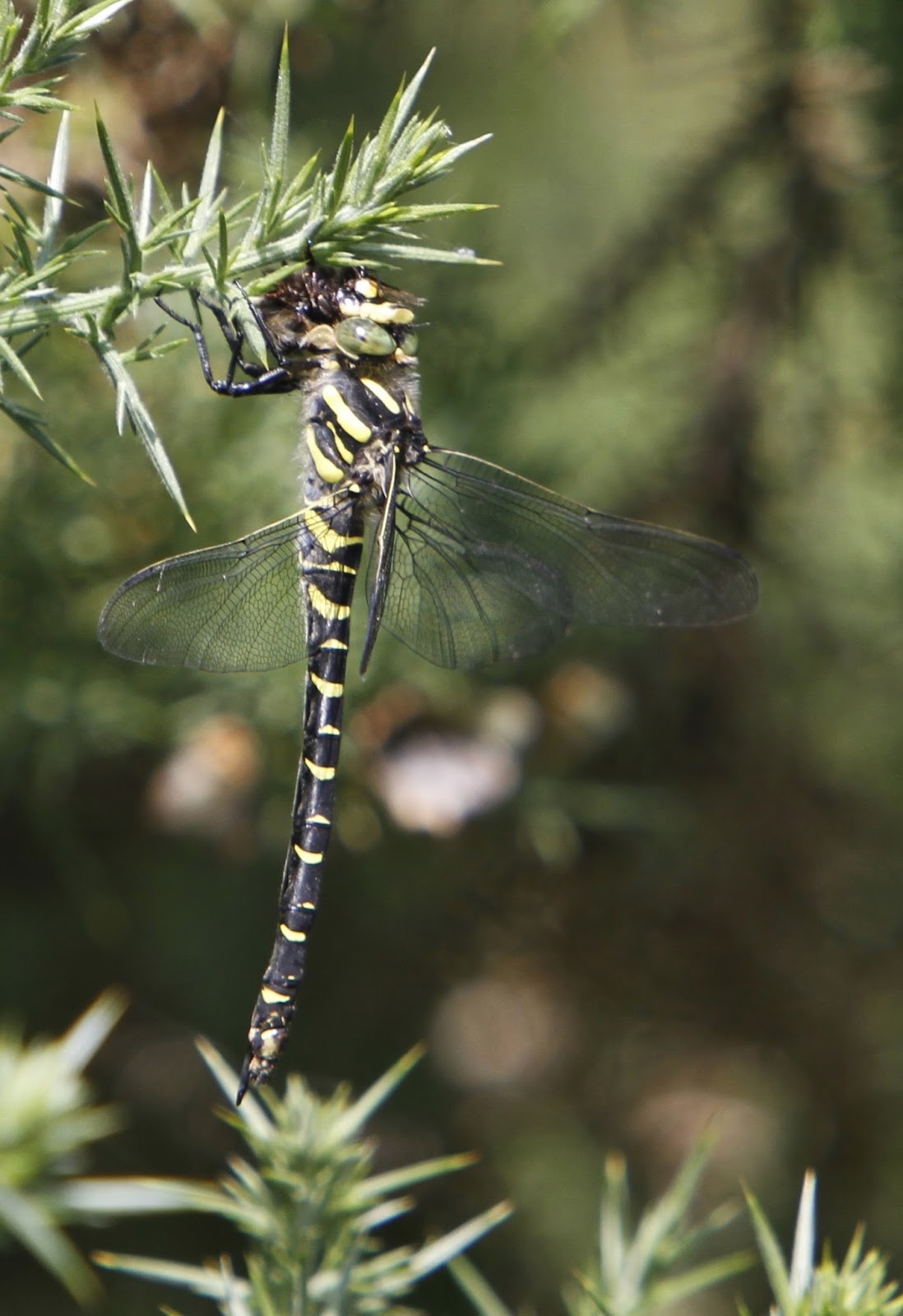On Monday morning , I popped over to Martin's for some advice on the Emperor Moth larvae that I am caring for . Whilst there , I got the opportunity to photograph a female Spurge Hawk Moth that he
has reared . Today a male hatched , and there could well be a lot more in the future . I was also able
to photograph an Elephant Hawk Moth caterpillar , green rather than the brown later instars that I
have seen in the past . I couldn't leave without a few more shots of the exotic Zebra .
A trip up to Burnt Gorse at High Elms failed to relocate the White Admiral , or find another , and Silver-washed Fritillary sightings were the same as last visit . Good to see a fresh female Small
Tortoiseshell , they are certainly making a good comeback . A female Red Admiral , one of several
seen recently , was hassled by the locals on a large Bramble bush . A brief visit to the bush was also made by a Humming-bird Hawk Moth , but that was seen off almost immediately by the locals too .
This morning , I made a recce visit to Dene Park near Tonbridge , prior to a visit with Keith . A chilly wind was blowing across the site and it took some time to warm up . Butterflies were few , even Meadow Brown and Ringlet were hard to find . Whilst waiting a bit of in flight practice with
Volucella pellucens , one of the larger hoverflies . A few White Admiral started to appear , but none
were willing to be photographed , indeed during the visit , just one made it into the viewfinder . But all was forgotten , when walking the triangle of paths for the umpteenth time , I spotted a shadow and slight movement in the sun on the back path . As I approached I could see it was a Purple Emperor , a
male , taking minerals from the path . He stayed closed winged , hardly moving for 2/3 minutes . I could hear voices approaching , and I think he did too , as a couple of times , he flicked his wings
open and shut , before finally taking off at speed . That was the only sighting , but made the visit very worthwhile . This afternoon , I had a look around Hutchinsons Bank , and pleased to see that the sheep had been taken off site . Lots of Marbled Whites around , but the Small Blues seem to have almost gone over now . Martin tells me that he had another / the same , Humming-bird Hawk Moth egg laying whilst he was doing the transect today . On the way off site , a look at the Peacock
caterpillars , found that they have spun a tent on the next leaf down in which they are crowded . Well , it is almost Glastonbury .
47 minutes ago



















































